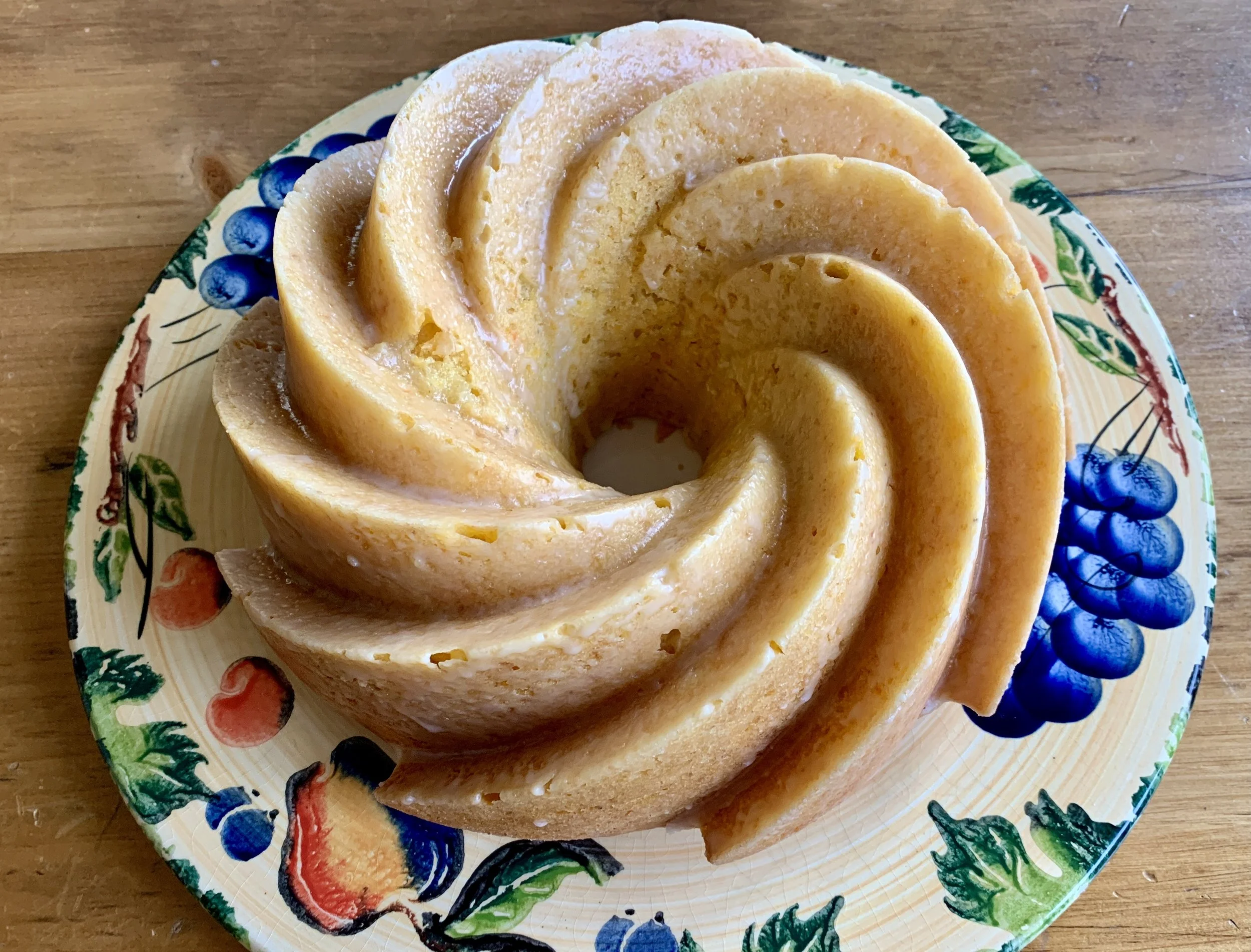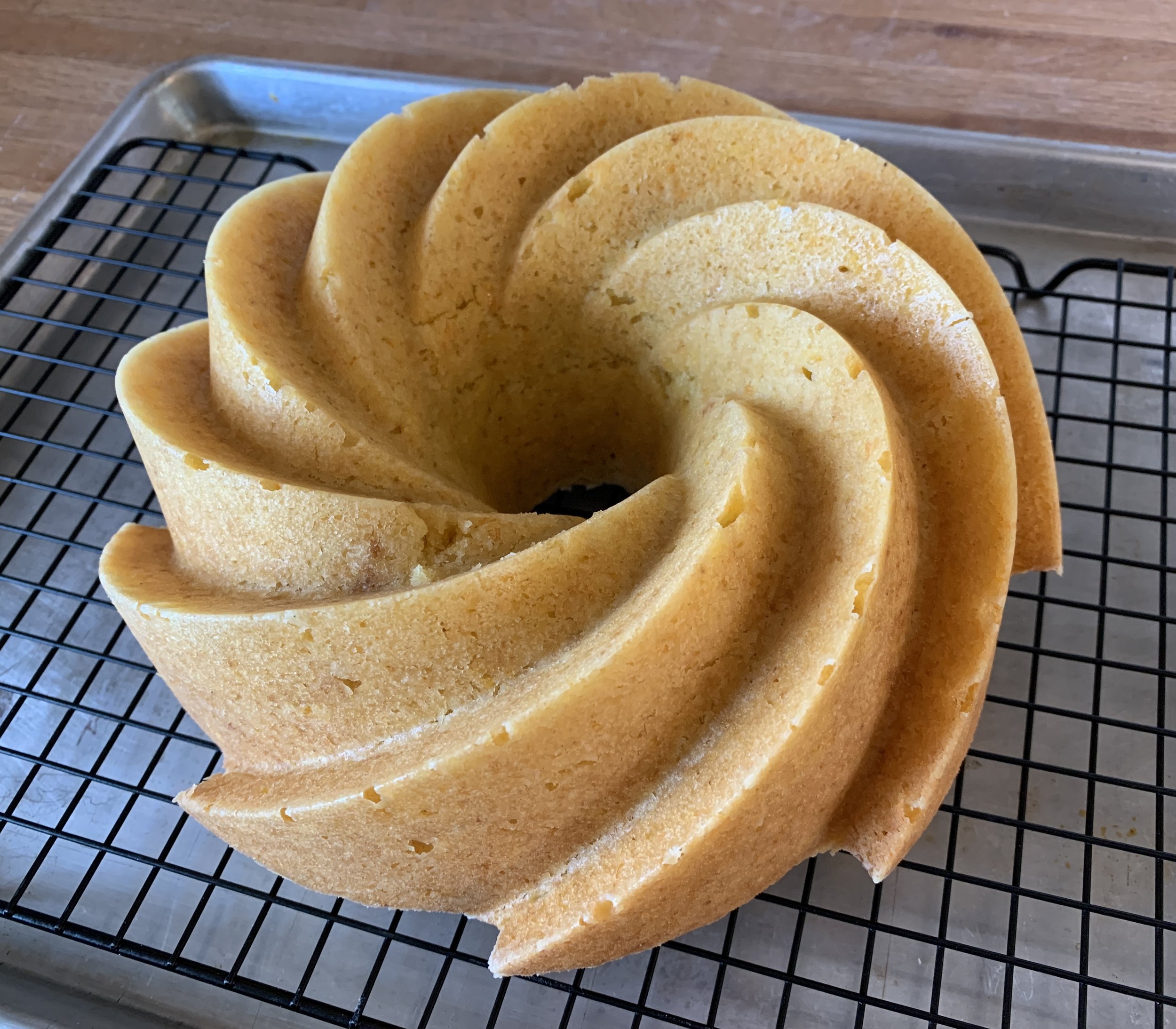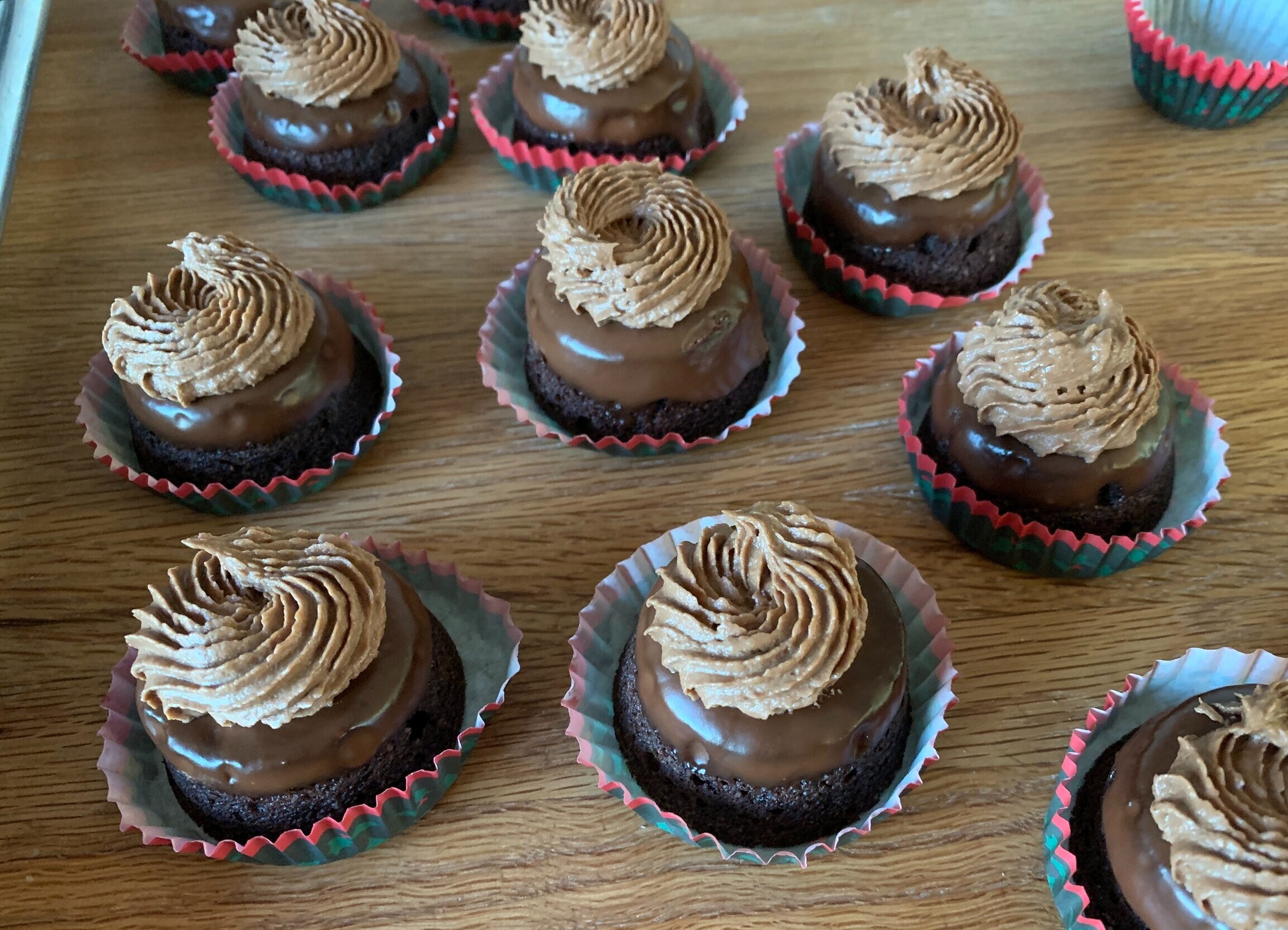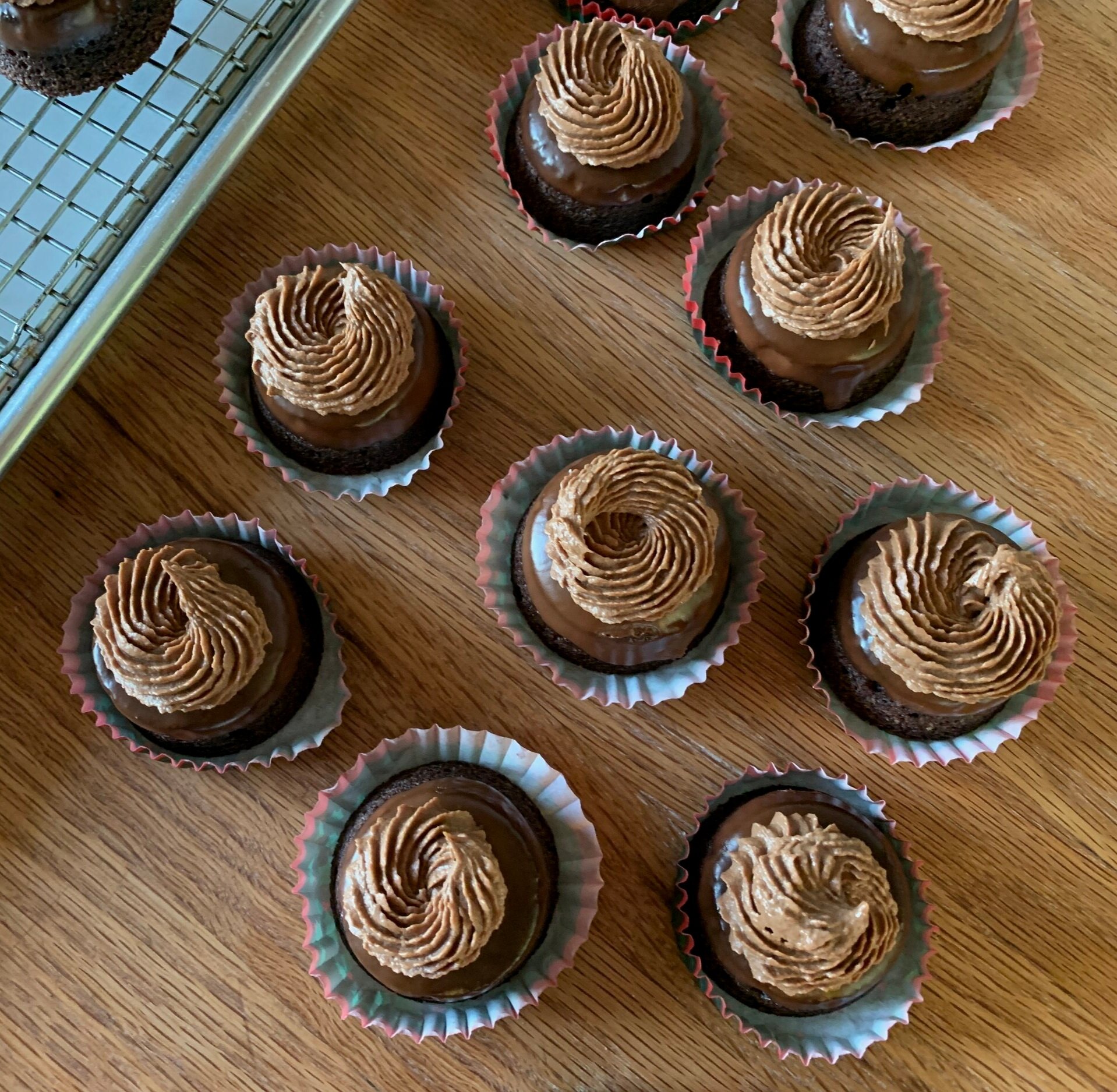Orange cake
/One of my favorite baking books is “Genius Desserts” written by the FOOD52 folks. I’ve mentioned it on and off in recent years and highly recommend it. I had tagged this cake as one to try - it’s billed as “whole orange cake”, the recipe published years ago in Sunset magazine. From a quick internet search I discovered that Sunset was first published in 1898!! Guess what - it’s still being published and the recipe is on their website.
Not long after I had added it to my baking agenda, lo and behold, over the next week or two, it popped up in my life, seemingly by happenstance. First I came across the same recipe in the NYT and then heard about the experience of making it from a woman attending a baking demo I was giving at a nearby assisted living facility. Kismet I say.
I’ll admit that what really drew me to baking this was the swirly Nordic Ware pan that I’ve had my eye on for awhile now. I kept telling myself “Susan - you don’t need another pan”, but I ordered it anyway. In my defense, the well-worn traditional style bundt pan that I used to have so many years ago is long gone and I had no urge to replace it. After all, I tend to prefer petite teacakes - love those financiers! - rather than large slices.
Buuuuttt . . . . Nordic Ware has been producing some very cool designs over the years and this one caught my eye - so classy without being too ornate. Something about those swirls.
10 Cup Heritage Bundt
While there are some whole orange cake recipes out there that require boiling whole oranges, this one calls for 2 oranges (about a pound), ends cut off but otherwise left unpeeled, then chunked up, seeded and pulsed in a food processor to a somewhat coarse purée. You can do that part ahead and hold it in the fridge until ready to make the batter.
I’ll go through the steps and link you to the recipe here. It is readily available on a number of sites and is certainly not unique to me. Who knows the countless number of folks who have made and enjoyed this cake over the years! Oh! You might notice my navel and cara-cara oranges in the photo below - seemed like a good combo.
As you plan your project, the do-aheads are: butter and flour the pan (or use pan spray), purée the oranges (you’ll portion out 355 g / 1 1/2 cups for the batter and compost or dispose of the rest), have 3 large eggs at room temp and 227 g / 2 sticks unsalted butter at soft room temp. When ready to make the batter, mise out 250 g / 1 1/4 cups sugar, 320 g / 2 1/2 cups all purpose flour, 2 teaspoons baking powder, 1/4 teaspoon baking soda and 1/4 teaspoon fine salt.
You’ll be glazing the cake after baking - whisk together 150 g / 1 1/2 cups confectioner’s sugar and 35 g fresh squeezed OJ. You can always do this during the bake.
Here’s how my purée looked - remember I used a combo of navel and cara-cara.
Heat the oven to 325ºF. Cream the butter and sugar for 3-5 minutes until lightened and fluffy. Add the eggs one at a time, blending each fully before adding the next. Blend in the orange purée. Looked a bit like orange cottage cheese.
Hmmmm . . . . interesting look
Add flour, baking powder, baking soda and salt and blend until incorporated and smooth.
Everything blended!
Scrape the batter into the prepared pan and smooth the top.
Ready to bake
Bake about 55 minutes - you want a golden top, firm to the touch and a tester with just a few crumbs clinging. Let cool in the pan about 10 minutes then turn out onto a grid over a pan and cool completely.
One note here - I made sure to butter and flour all the crevices thoroughly even though the pan is billed as non-stick. This cake released from the pan beautifully. One of the frustrations I used to have with the old bundt-form pan I had years ago (a lighter weight knock off) was getting the cake out of the pan without leaving some pieces here and there. Grrrrr . . . . but not any more!
Hmmm . . . maybe I should do a test without buttering the pan - makes me nervous but gotta try it.
Spoon and brush the glaze over the top, into the crevices. I prefer my glaze on the thinner side - gauge the way you like it by starting with less OJ to confectioner’s sugar for a thicker consistency or add additional OJ or even a bit of water for a thinner glaze. Once glazed I pop it back into the oven for 3 minutes or so to set the glaze.
All glazed up
Delicious, moist and tender with just the right amount of orange flavor and a hint of sweetness - a perfect balance.
Steve and I enjoyed a slice with a small scoop of vanilla ice cream and some strawberries. Yum. A slice with morning coffee was good too, and the remaining slices went into the freezer for future enjoyment. Yes I would make this again.
I’ll be back with you as the weeks go by. Enjoy!























